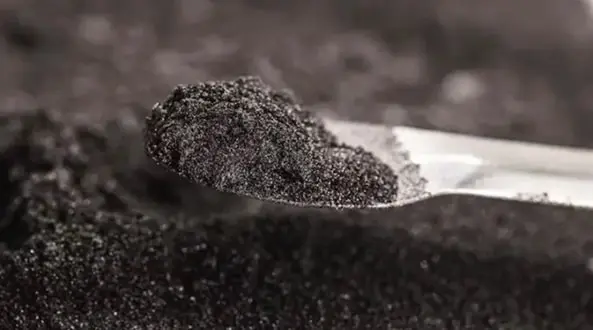
A lubricant can be defined as a material that provides a low coefficient of friction, does not damage the surface and attaches to the surface. It helps to reduce friction between the two moving parts and allows them to slide smoothly.
Solid lubricant is a material which when placed between the two surfaces in motion will shear easily under the given load. The coefficient of friction in solid lubricants is related to the shear force and the applied load.
Solid lubricants are more effective than liquid lubricants particularly in high-load conditions. In high-load conditions, the liquid lubricant will get pushed out of the interface but a solid lubricant with bounding strength will stay in place. They will be more effective in such situations.
Sold lubricants have a high resistance to deterioration and do not get oxidised easily. They have relatively high-temperature stability as their structure is more stable. Their molecular structure does not change easily at moderate temperatures.
Liquid lubricants need to be pumped, pipelines are required and they need to be sealed. Therefore the overall equipment will become complex. Whereas when sold lubricants are used the equipment can be lighter and simpler. This is the main advantage of using solid lubricants. Sometimes the liquid lubricant can leak out therefore it can be said that solid lubricants maintain cleanliness. Sold lubricant can be applied to the surface for a certain duration.
Solid lubricants have fewer chemical activities and can be used in reactive environments. They are also stable against radiation.
The different types of solid or dry lubricants are graphite, molybdenum disulfide, tungsten disulfide, hexagonal boron nitride and PTFE powder.
Types of solid lubricants
Graphite
It is the crystalline form of the element carbon and consists of stacked layers of graphene. It occurs naturally and shows lubricating properties. The structure consists of rings of six carbon atoms arranged in horizontal sheets. Each sheet is called Graphene. The bonds between the layers are the weak Van der Waal bonds and the layers easily glide past each other.
The lubricating properties come from the loose bonding between the sheets in the structure. It functions well in high-temperature conditions and radiation atmospheres. However, in a vacuum graphite degrades as a lubricant. It is an excellent lubricant in humidity.
Molybdenum disulfide
It is an inorganic compound made up of Molybdenum and Sulphur. It is found naturally as Molybdenum or Jarosite mineral ore. It has a layered structure with a plane of molybdenum atoms sandwiched by planes of Sulfide ions. It is relatively inactive and does not get affected by dilute acids and oxygen. Due to the weak Van der Waal bonds between the layers it has a low coefficient of friction.
It shows high lubricity and stability up to 350° C in oxidation environments. It has a high load-carrying capacity, offers better adhesion and protects against fretting corrosion.
Tungsten disulfide
It is an organic compound made up of Tungsten and Sulphur. It occurs naturally as a mineral ore called Tungstenite. Its structure consists of stacked layers of Tungsten atoms sandwiched between two Sulphur atom layers. The Tungsten and Sulphur atoms are bonded by strong covalent bonds. The individual layers are bonded with weak Van der Waal forces. It exhibits lubricating properties.
It is used for lubricating fasteners, bearings and molds. It has significant use in the aerospace and military industry.
Hexagonal boron nitride
It has a layered structure similar to Graphite and is also known as ‘White Graphite’. It has excellent mechanical properties, good thermal conductivity, chemical stability and thermal stability. It is useful in high temperature conditions. It has a layered structure in which each atom of Boron and Nitrogen is bonded with strong covalent bonds and the layers are held together by weak Van der Waal forces. Due to its structure it possesses friction reducing and ani-wear characteristics.
It is a cheap lubricant and used in metalworking applications which require high-temperature and cleanliness.
PTFE powder
Polytetrafluoroethylene (PTFE) is a synthetic fluoropolymer. It is commonly known as Teflon and used as a non-stick coating for cookware. Neither water or water containing substances can wet it. The structure consists of a chain of Carbon atoms with two Fluorine atoms bonded to each Carbon atom. The Fluorine atoms surround the Carbon atoms and create a chemically inert molecule. It has strong Carbon-Fluorine bonds and nothing mcu can react with it. It is slippery and is useful because it does not react with anything.
It is a solid with the lowest coefficient of friction. It has good friction reducing properties and a high melting point.
Santosh Kumar, the author behind IndiasStuffs.com, is passionate about sharing valuable insights on a variety of topics, including lifestyle, technology, and Indian culture.
Page Contents

